If you’re looking for a unique and delicious addition to your garden, candy cane peppers are the perfect choice. These striped wonders are known for their vibrant fruits and variegated foliage, making them a visual delight. But they’re not just pretty to look at; candy cane peppers also pack a punch when it comes to flavor.
Whether you’re a seasoned gardener or a beginner, this article will provide you with the tips and tricks you need to successfully grow candy cane peppers. From choosing the right seeds to harvesting and storing your peppers, you’ll learn everything you need to know to enjoy a bountiful harvest.
Key Takeaways:
- Candy cane peppers are a unique and visually appealing variety of pepper.
- They can be grown from seeds and come in different varieties.
- Candy cane peppers prefer well-drained, nutrient-rich soil and require consistent moisture.
- They can be used in various culinary applications, from snacking to adding sweetness to dishes.
- Candy cane peppers can be harvested at any stage of ripeness and stored in the refrigerator.
About Candy Cane Peppers
Candy cane peppers are hybrid varieties known for their unique appearance, with striped fruits and variegated foliage. These peppers are visually stunning and can add a pop of color to any garden or culinary creation. They can be grown from seeds, which are readily available from trusted sellers. Candy cane peppers come in different varieties, each with its own distinct patterns and colors, making them a delightful addition to any pepper lover’s collection.
Different Candy Cane Pepper Varieties
There are several candy cane pepper varieties to choose from, each offering a unique twist on this captivating pepper. Some candy cane pepper plants produce fruits that turn a dark brown color before eventually ripening to a vibrant red. This color transformation adds even more visual interest to the already dazzling appearance of the peppers. With their distinctive stripes and psychedelic combination of colors, each candy cane pepper plant is like a work of art in your garden.
Where to Find Candy Cane Pepper Seeds
Growing candy cane peppers from seeds is a rewarding experience, allowing you to witness the full growth cycle of these captivating peppers. Candy cane pepper seeds can be purchased from reputable sellers, ensuring that you are starting with high-quality seeds for the best chance of success. Look for trusted seed suppliers online or visit your local gardening store to find candy cane pepper seeds and start your pepper-growing adventure.
Don’t miss the opportunity to bring a touch of magic to your garden with candy cane peppers. These eye-catching peppers will not only impress your friends and family but also provide you with a bountiful harvest of delicious and visually stunning fruits.
Growing Candy Cane Peppers
Growing candy cane peppers is a rewarding experience that allows you to enjoy these unique and flavorful chili peppers right from your own garden. Since candy cane peppers are not commonly found in grocery stores, growing them yourself is the best way to experience their delicious taste and vibrant colors. Whether you have a spacious garden or limited space, candy cane peppers can be grown in various settings, including containers, raised beds, and traditional gardens.
To ensure successful growth, candy cane peppers require well-drained, nutrient-rich soil with a pH level between 6.5 and 7. This optimal soil condition provides the necessary nutrients for the plants to thrive. Consistent moisture is important for candy cane peppers, especially during dry spells, so be sure to water them deeply to keep the soil evenly moist. This helps the plants produce healthy fruits with intense flavors.
Proper spacing is essential to allow each candy cane pepper plant enough room to grow and develop. When planting in a garden bed or raised bed, space the plants approximately 18-24 inches apart to provide ample air circulation and prevent overcrowding. For container gardening, choose a container that is at least 12 inches in diameter to accommodate the root system of the plant.
Supporting Candy Cane Pepper Plants
Supporting candy cane pepper plants is crucial to ensure their stability and maximize fruit production. As the plants grow taller, they may require additional support to prevent bending or breaking of the stems. Using stakes or tomato cages can help keep the plants upright and protect them from wind or heavy rain. Place the stake or cage securely in the ground, near the base of the plant, and gently tie the main stem to the support structure using soft plant ties or garden twine.
| Planting Method | Spacing | Support |
|---|---|---|
| Container | 1 plant per 12-inch diameter container | Stake or tomato cage |
| Raised Bed or Garden Bed | 18-24 inches apart | Stake or tomato cage |
Candy cane peppers are visually stunning with their striped fruits and variegated foliage, making them a beautiful addition to any garden. Their unique appearance and flavor make them a versatile ingredient in various dishes, adding both heat and a touch of sweetness. Explore different recipes and experiment with candy cane peppers to enhance your culinary creations. With proper care and attention, your candy cane pepper plants will yield an abundant harvest of these flavorful chili peppers.
Candy Cane Pepper Uses
Candy cane peppers are not only visually appealing but also versatile in the kitchen. They can be incorporated into various culinary applications, adding a unique touch of flavor and color to dishes. Here are some ways to make the most of this delightful pepper:
1. Candy Cane Pepper Recipe
One delicious way to enjoy candy cane peppers is by using them in a candy cane pepper recipe. You can use them as a replacement for traditional red bell peppers in recipes, such as stir-fries, salads, or stuffed peppers. Their vibrant color and distinct flavor will bring a delightful twist to your dishes. Try this mouthwatering recipe:
Candy Cane Pepper and Feta Salad
| Ingredients | Instructions |
|---|---|
|
|
2. Candy Cane Pepper Salsa
Candy cane peppers can also be used to create a flavorful candy cane pepper salsa. Their sweetness adds a unique twist to the traditional salsa recipe. Here’s how you can make your own:
Candy Cane Pepper Salsa
| Ingredients | Instructions |
|---|---|
|
|
3. Candy Cane Bell Pepper
In addition to their culinary applications, candy cane peppers can also be enjoyed as a snack. Whether you prefer a crisp texture or a sweeter flavor, candy cane peppers are perfect for munching. Their unique striped appearance makes them an eye-catching addition to any snack platter.
With their versatility and delightful flavor, candy cane peppers are a delightful addition to any kitchen. Whether you want to experiment with new recipes or enjoy them as a snack, these peppers are sure to impress your taste buds.
Candy Cane Pepper Harvesting and Storage
Harvesting candy cane peppers is an exciting process that allows you to enjoy their unique flavor and vibrant color. When it comes to picking these delicious peppers, timing is everything. For the best flavor, wait until the peppers reach full maturity before harvesting. At this stage, their taste is at its peak, offering a perfect balance of sweetness and spice.
When it’s time to harvest your candy cane peppers, use pruning shears or a sharp knife to cut them from the plant. This ensures a clean break, minimizing damage to the plant and preserving the peppers’ quality. Remember to wear gloves to protect your hands from any potential irritation caused by handling spicy peppers.
If you prefer a continuous harvest, consider picking candy cane peppers regularly as they mature. This practice can encourage the plant to produce more fruits, boosting your overall yield. However, keep in mind that harvesting peppers prematurely may sacrifice some flavor, so it’s best to allow them to fully ripen whenever possible.
After harvesting your candy cane peppers, proper storage is essential to keep them fresh for as long as possible. To maintain their crispness and prevent rotting, store the peppers unwashed in a loosely closed plastic bag in the refrigerator. This helps maintain a cool, dry environment that extends their shelf life.
Now that you know how to harvest and store your candy cane peppers, you can enjoy their exceptional flavor throughout the season. Whether you’re using them in salsas, stir-fries, or simply enjoying them raw, these vibrant striped peppers are sure to add a burst of color and taste to your dishes.
Quick Tips for Harvesting and Storing Candy Cane Peppers:
- Wait for peppers to fully ripen for the best flavor.
- Use pruning shears or a sharp knife to cut peppers from the plant.
- Consider regular harvesting to boost overall yield.
- Store unwashed peppers in a loosely closed plastic bag in the refrigerator.
- Keep the peppers dry to prevent rotting.
Tips for Successful Pepper Growing
When it comes to growing peppers, including the unique candy cane pepper variety, proper care is essential for a bountiful harvest. Here are some helpful tips to ensure your pepper plants thrive:
1. Provide Optimal Growing Conditions
Peppers prefer full sun, so ensure they receive at least six to eight hours of direct sunlight each day. Additionally, peppers need well-drained, nutrient-rich soil with a pH between 6.5 and 7. To promote healthy growth, consider enriching the soil with organic matter, such as compost or well-rotted manure, before planting.
2. Consistent Moisture is Key
Peppers require regular and consistent moisture, particularly during dry spells. Water deeply, ensuring the soil is evenly moist, but avoid overwatering as it may lead to root rot. Mulching around the base of the plants can help retain moisture and prevent weed growth.
3. Protect Your Pepper Plants
Pepper plants are susceptible to various pests and diseases that can hinder their growth and productivity. Common pests to watch out for include aphids and cutworms. Regularly inspect your plants and take appropriate measures, such as using organic pest control methods or introducing beneficial insects, to keep pests at bay.
Pepper plants may also suffer from diseases like blossom end rot, which causes the bottoms of the fruits to darken and decay. Prevent blossom end rot by consistently providing adequate calcium and ensuring the soil moisture levels are consistent.
4. Monitor and Maintain
Regular monitoring of your pepper plants is crucial for identifying and addressing any issues promptly. Keep an eye out for signs of pests, diseases, or nutrient deficiencies, such as yellowing leaves or stunted growth. Regularly inspect the undersides of leaves and the base of the plants for any signs of infestation or disease development.
Proper maintenance practices, such as removing weeds, pruning affected leaves, and providing support for taller pepper varieties, can go a long way in promoting healthier and more fruitful plants.
“Successful pepper growing requires attention to detail and consistent care. By providing optimal growing conditions, ensuring consistent moisture, protecting your plants from pests and diseases, and regularly monitoring and maintaining them, you can enjoy a bountiful harvest of flavorful peppers.”
| Common Pepper Plant Pests | Pest Identification | Pest Control |
|---|---|---|
| Aphids | Small, pear-shaped insects that cluster on new growth. They suck sap from plants and can cause stunted growth and distorted leaves. | – Spray plants with a strong stream of water to dislodge aphids. – Introduce beneficial insects like ladybugs, lacewings, or parasitic wasps. – Apply an organic insecticidal soap or neem oil spray. |
| Cutworms | Caterpillars that live in the soil and emerge at night to cut off young plant stems at the soil line. They can cause plants to wilt and die. | – Use collars around the base of young plants to prevent cutworms from reaching them. – Apply Bacillus thuringiensis (Bt) to soil to prevent cutworm infestations. – Handpick cutworms and dispose of them. |
Note: Proper identification of pests is crucial for effective control. Consult local extension services or gardening resources for accurate pest identification.
Different Pepper Varieties
Candy cane peppers are a unique variety, known for their striped fruits and variegated foliage. Some seed sellers refer to them as candy cane chocolate peppers because the fruits will sometimes turn a dark brown color before fully ripening to red. This variety is just one of many pepper varieties available, ranging from sweet bell peppers to spicy habanero peppers. Each variety has its own flavor profile and culinary uses.
Pepper varieties offer a wide range of flavors and heat levels, allowing you to explore different tastes in your dishes. Whether you’re looking for a mild pepper to add sweetness to a salad or a spicy pepper to kick up the heat in a stir-fry, there’s a pepper variety to suit your preferences. Let’s take a closer look at some popular pepper varieties:
- Bell Peppers: The sweet and crunchy bell peppers are available in various colors, including red, yellow, orange, and green. They are perfect for salads, stuffing, or simply snacking.
- Habanero Peppers: These small, fiery peppers pack a punch. They have a fruity flavor and are commonly used in spicy sauces and salsas. Use them sparingly if you’re sensitive to heat!
- Jalapeno Peppers: Jalapenos are medium-sized peppers with a medium level of heat. They add a nice kick to dishes like nachos, tacos, and salsas.
- Poblano Peppers: Poblanos are mild peppers that are often stuffed and roasted. They are commonly used in Mexican cuisine and have a rich, earthy flavor.
- Cayenne Peppers: Cayenne peppers are long and slender with a medium to high level of heat. They are commonly used to add spice to soups, stews, and chili.
These are just a few examples of the many pepper varieties available. Each variety offers its own unique flavor and heat level, allowing you to experiment and create dishes that suit your taste buds. Whether you prefer a mild pepper for a subtle flavor or a spicy pepper to ignite your taste buds, the world of peppers has something for everyone.
To give you a visual representation of the different pepper varieties, take a look at the table below:
| Pepper Variety | Heat Level | Flavor Profile | Common Uses |
|---|---|---|---|
| Bell Peppers | Mild | Sweet and crisp | Salads, stuffing, snacking |
| Habanero Peppers | Very hot | Fruity | Sauces, salsas |
| Jalapeno Peppers | Medium | Spicy with a hint of sweetness | Nachos, tacos, salsas |
| Poblano Peppers | Mild | Rich and earthy | Stuffed peppers, Mexican dishes |
| Cayenne Peppers | High | Fiery and pungent | Soups, stews, chili |
As you can see, each pepper variety brings its own unique characteristics to the table. From the mild sweetness of bell peppers to the fiery heat of habaneros, peppers offer a world of flavors to explore in your cooking.
Growing Peppers: Best Practices
Growing peppers can be a rewarding and enjoyable endeavor. Whether you’re a seasoned gardener or just starting out, following best practices is key to ensuring a successful pepper harvest. Here are some tips to help you grow healthy and productive pepper plants.
Optimal Growing Conditions
Peppers thrive in warm climates, but that doesn’t mean they can’t be grown in colder regions. With some extra care, you can still enjoy a bountiful pepper harvest. Here are the key requirements for pepper plants:
- Well-drained soil: Peppers prefer soil that drains well to prevent waterlogging, which can lead to root rot. Ensure your soil has good drainage by adding organic matter such as compost or perlite.
- Optimal pH levels: Pepper plants thrive in slightly acidic soil with a pH level between 6.5 and 7. Test your soil’s pH and make necessary amendments to achieve the ideal range.
- Spacing: Pepper plants need adequate space to grow and flourish. Depending on the variety, space your plants between 12 and 36 inches apart to allow for good airflow and sunlight penetration.
- Full sun exposure: Peppers require at least 6-8 hours of direct sunlight daily for optimal fruit production. Choose a sunny spot in your garden or place containers in areas that receive ample sunlight.
- Temperature considerations: While peppers love warmth, extreme temperatures can stress the plants. Protect them from scorching heat or cold drafts by using shade cloth or row covers when necessary.
Proper Watering and Care
Consistent and adequate watering is essential for pepper plants. Here are some watering tips:
“Peppers should be watered consistently but not overwatered.”
Overwatering can lead to root diseases, while underwatering can cause stress and poor fruit development. Follow these guidelines:
- Water deeply: Ensure the water reaches the root zone by watering deeply rather than surface watering. This encourages deep root growth and helps the plants withstand dry spells.
- Watering frequency: Pepper plants generally require 1-2 inches of water per week. Adjust the frequency based on your soil type, weather conditions, and plant size.
- Avoid wet foliage: To prevent disease, water at the base of the plant and avoid wetting the leaves. Drip irrigation or a soaker hose is a great option for targeted watering.
In addition to watering, regular monitoring for pests and diseases is crucial. Inspect your plants frequently for signs of common pests like aphids or diseases such as blossom end rot. Early detection allows for prompt treatment and prevents further damage.
By following these best practices, you’ll be well on your way to growing healthy and productive pepper plants. Whether you’re growing them in your garden or containers, with the right care and attention, you’ll soon be enjoying a vibrant harvest of fresh and flavorful peppers.
Harvesting and Storing Peppers
Peppers are a versatile crop that can be harvested at various stages of ripeness, allowing you to customize their flavor to your personal preference. Some peppers, like jalapeños, are commonly picked when they are still green, offering a zesty and mildly spicy taste. On the other hand, bell peppers can be left to ripen on the plant, turning from green to shades of yellow, orange, and red, which enhances their sweetness.
When it comes time to harvest your peppers, it’s important to use the right tools. To avoid damaging the plant, you can cut the peppers from the stem using pruning shears or a sharp knife. Be careful not to bruise or crush the peppers in the process, as this can lead to spoilage.
Once you’ve harvested your peppers, it’s essential to store them properly to maintain their freshness. Start by gently rinsing the peppers to remove any dirt or residue. Then, pat them dry with a clean cloth or paper towel. Storing peppers unwashed will help prevent moisture buildup and rotting.
The best way to store peppers is in the refrigerator. Place them in a loosely closed plastic bag to allow for airflow. Keep the temperature between 45°F and 55°F (7°C and 13°C) to ensure optimal preservation. Remember to regularly check your stored peppers for signs of spoilage and remove any that show signs of decay to prevent it from affecting the other peppers.
Properly harvested and stored peppers can last for up to two weeks in the refrigerator. However, it’s best to use them as soon as possible for the freshest flavor and texture.
- Harvest peppers at different stages of ripeness to enjoy various flavor profiles.
- Use pruning shears or a knife to cut peppers from the stem, minimizing damage to the plant.
- Store peppers unwashed in a loosely closed plastic bag in the refrigerator.
- Regularly check stored peppers for spoilage and remove any that show signs of decay.
Pepper Storage Tips:
- Rinse peppers gently to remove dirt and residue, then pat them dry.
- Keep the temperature between 45°F and 55°F (7°C and 13°C) in the refrigerator for optimal storage.
- Inspect stored peppers frequently and discard any that show signs of spoilage.
Conclusion
Growing candy cane peppers is a rewarding experience that allows you to enjoy the beauty and taste of these unique peppers. With their striped fruits and variegated foliage, candy cane peppers are a visually appealing addition to any garden. But their benefits go beyond aesthetics – their delicious flavor and versatility in the kitchen make them a must-have for any pepper lover.
To successfully grow candy cane peppers, it is important to give them the care and attention they need. These peppers can thrive in gardens of all sizes, whether you have a spacious backyard or a compact balcony. Just make sure they receive proper sunlight, well-drained soil, and consistent moisture. With these specific requirements in mind, you’ll be on your way to a bountiful harvest of candy cane peppers.
Once you’ve grown your own candy cane peppers, the culinary possibilities are endless. Use them fresh to add a pop of color and flavor to salads and sandwiches. Or incorporate them into salsas, dips, and sauces for a delightful tang. Their unique striped pattern can even make them the star of your dish, as they beautifully garnish pizzas, tacos, and stir-fries. The sweetness of fully ripened candy cane peppers is irresistible and will surely leave your taste buds wanting more.
So, why wait? Start growing your own candy cane peppers today and experience the joy of tending to these vibrant and flavorful peppers. Explore their culinary potential and savor the benefits they bring to your table. With their stunning appearance and irresistible taste, candy cane peppers are sure to elevate your gardening and culinary adventures. Happy growing!

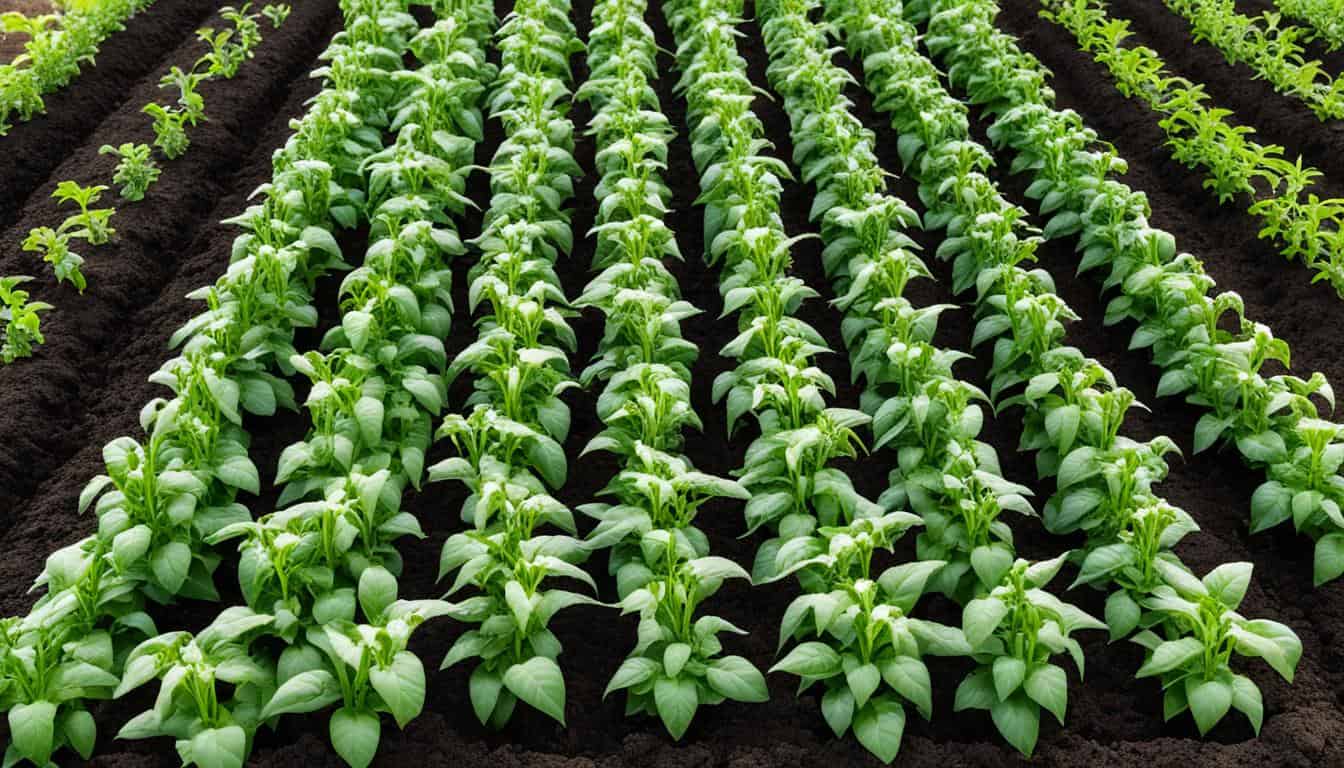
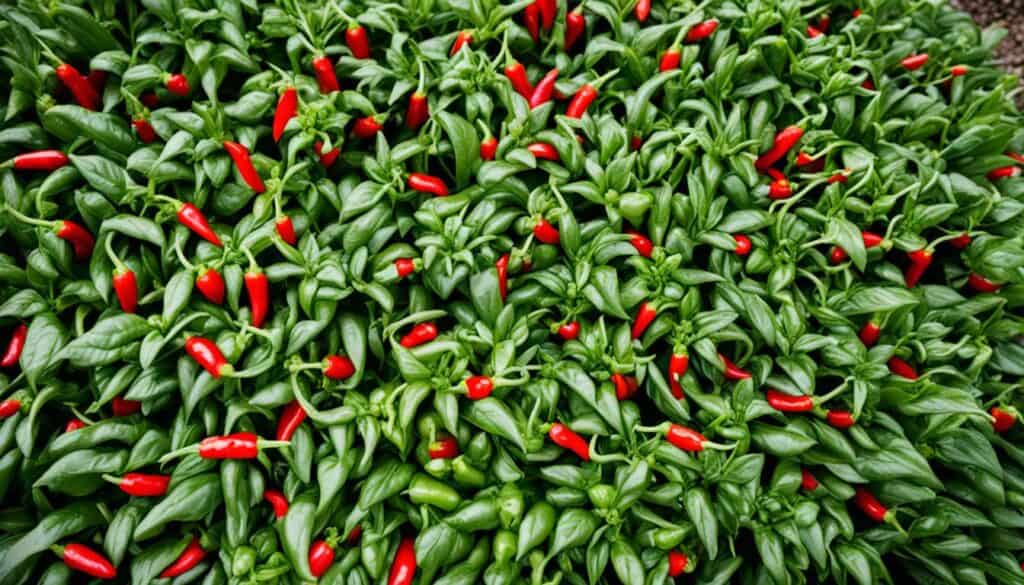
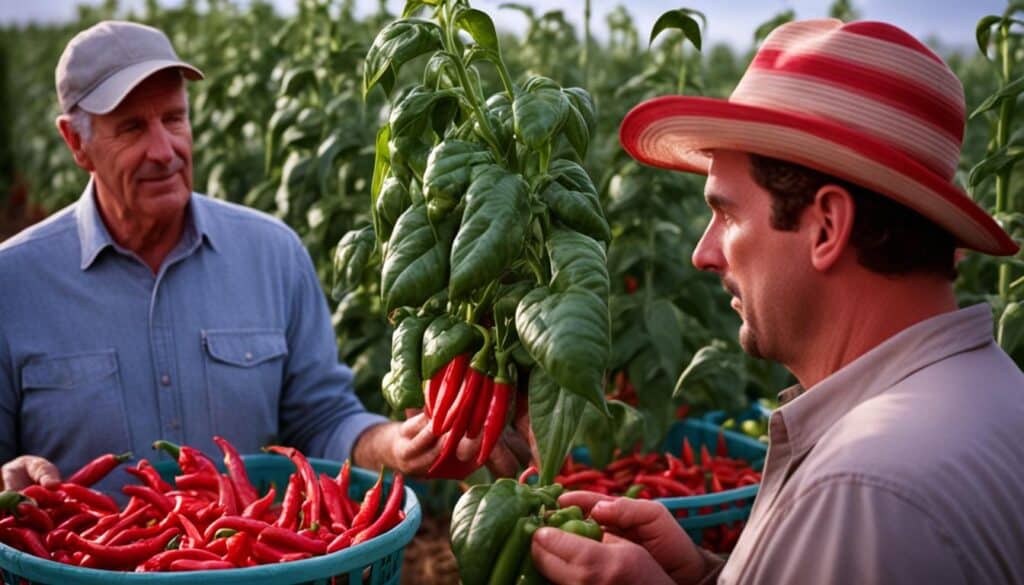
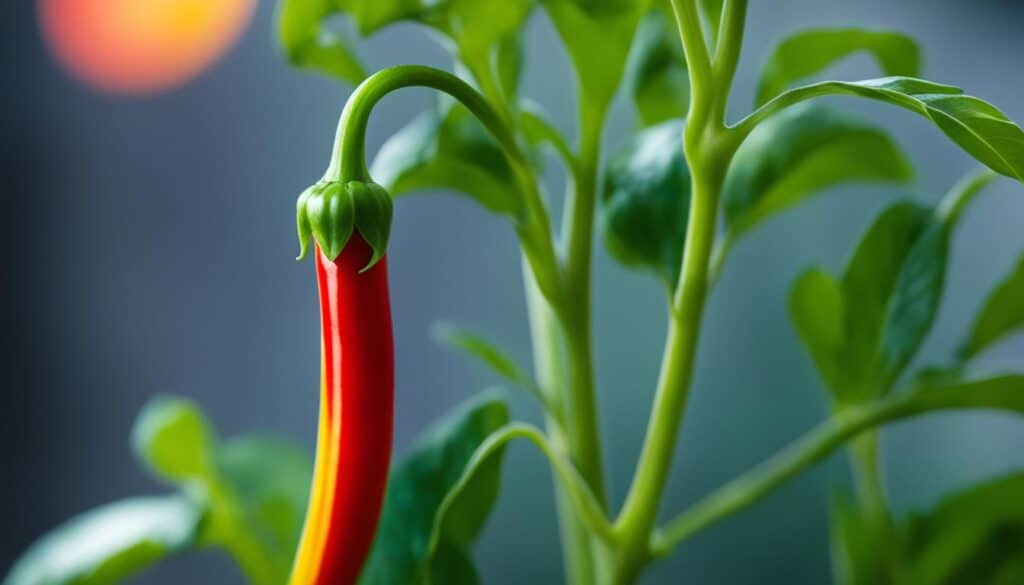
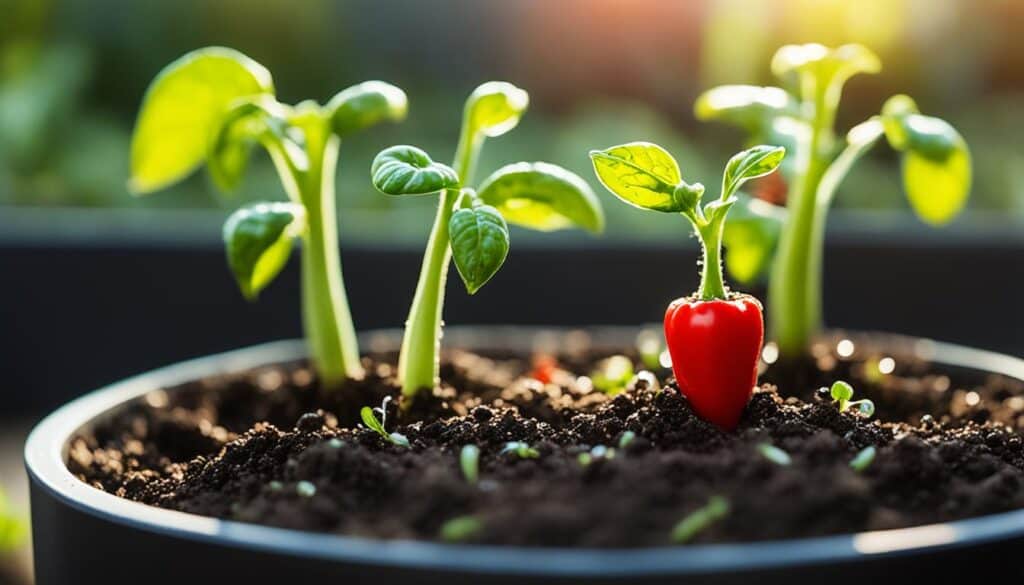




Leave a Reply